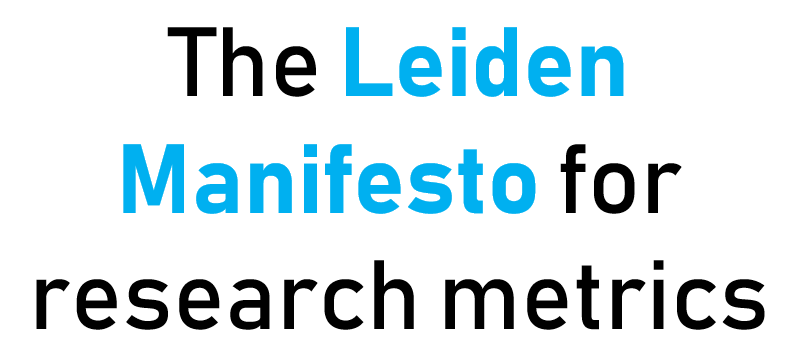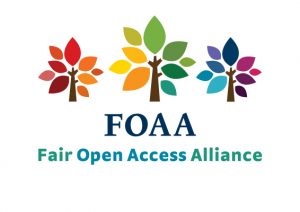¿Influyen el sexo y el temperamento en los cambios en la expresividad emocional de infantes chilenos? Un estudio longitudinal
DOI:
https://doi.org/10.24215/2422572Xe130Palabras clave:
expresividad emocional, temperamento, sexo, infancia, socializaciónResumen
La expresividad emocional es relevante para un funcionamiento saludable, y en los primeros años tanto aspectos evolutivos como culturales la van configurando. Este estudio evaluó el cambio de la expresividad emocional en 99 niños entre los 12, 18, 24 y 30 meses de edad, considerando la capacidad de expresar placer y frustración, y su intensidad. Se evaluó la expresividad emocional de los niños frente a tareas que elicitaban placer y frustración, y se aplicó el IBQ-R-VSF para evaluar el temperamento. Se observó que con el paso del tiempo disminuía significativamente la cantidad de niños que expresaban frustración. Además, la intensidad con la cual los niños expresaban placer y frustración también mostró una disminución significativa. Se obtuvieron perfiles que combinaban sexo y temperamento de los niños, y que mostraron diferentes patrones de cambio en la expresividad emocional de los niños. Se discuten estos resultados desde la perspectiva de la socialización de emociones positivas y negativas en la cultura chilena.
Referencias
Adimark (2000). El nivel socioeconómico ESOMAR; Manual de aplicación. www.microweb.cl/idm/documentos/ESOMAR.pdf
Akin, A., Satici, S. A., y Kayis, A. R. (2012) Emotional expressivity and submissive behavior. Journal of Education and Instructional Studies in the World, 2(1), 1-6.
Burns, K. C., y Friedman, S. L. (2012). The benefits of emotional expression for math performance. Cognition & Emotion, 26(2), 245-251. https://doi.org/10.1080/02699931.2011.577564
Calkins, S. D., y Mackler, J. S. (2011). Temperament, emotion regulation, and social development. En M. K. Underwood & L. H. Rosen (Eds.), Social development: Relationships in infancy, childhood, and adolescence (pp. 44–70). Guilford Press.
Camras, L. A., y Fatani, S. S. (2010). The development of facial expressions. Current Perspectives on infant emotions. En M. Lewis, J. M. Haviland-Jones y L. Feldman (Eds.), Handbook of emotions (3a ed, pp. 291-303). The Guilford Press.
Carstensen, L. L., Pasupathi, M., Mayr, U., y Nesselroade, J. R. (2000). Emotional experience in everyday life across the adult life span. Journal of Personality and Social Psychology, 79(4), 644–655. https://doi.org/10.1037/0022-3514.79.4.644
Chaplin, T. y Aldao, A. (2013). Gender differences in emotion expression in children: A meta-analytic review. Psychological Bulletin, 139(4), 735-765. https://doi.org/10.1037/a0030737
Chaplin, T. M., Cole, P. M., y Zahn-Waxler, C. (2005). Parental socialization of emotion expression: Gender differences and relations to child adjustment. Emotion, 5(1), 80-88. http://dx.doi.org/10.1037/1528-3542.5.1.80
Charbonneau, G., Bertone, A., Lepore, F., Nassim, M., Lassonde, M., Mottron, L., y Collignon, O. (2013). Multilevel alterations in the processing of audio–visual emotion expressions in autism spectrum disorders. Neuropsychologia, 51(5), 1002-1010. https://doi.org/10.1016/j.neuropsychologia.2013.02.009
Charlesworth, W. R., y Kreutzer, M. A. (2006). Facial expressions of infants and children. En P. Ekman (Ed.), Darwin and facial expression (1a ed, pp. 91-168). Malor Books.
Collier, G., y Collier, G. J. (2014). Emotional expression. Psychology Press.
Corrales, E. (2011). El lenguaje no verbal: Un proceso cognitivo superior indispensable para el ser humano. Revista Comunicación, 20(1), 46–51.
Dobbs, J. L., Sloan, D. M., y Karpinski, A. (2007). A psychometric investigation of two self-report measures of emotional expressivity. Personality and Individual Differences, 43(4), 693-702. https://doi.org/10.1016/j.paid.2007.01.010
Domes, G., Winter, B., Schnell, K., Vohs, K., Fast, K., y Herpertz, S. C. (2006). The influence of emotions on inhibitory functioning in borderline personality disorder. Psychological Medicine, 36(8), 1163-1172. https://doi.org/10.1017/S0033291706007756
Farkas, C., Santelices, M. P., y Himmel, E. (2011). Análisis desde una perspectiva evolutiva y cultural del uso de la comunicación gestual en infantes y pre-escolares, en la expresión y comprensión de los estados internos y su impacto en el desarrollo socio-emocional de los niños(as). Proyecto FONDECYT 1110087, Escuela de Psicología, Pontificia Universidad Católica de Chile, Santiago, Chile.
Farkas, C., y Vallotton, C. (2016). Differences in infant temperament between Chile and the US. Infant Behavior and Development, 44, 208-218. https://doi.org/10.1016/j.infbeh.2016.07.005
Fernández, I., Carrera, P., Sánchez, F. y Páez, D. (2001). Prototipos emocionales desde una perspectiva cultural. Revista Española de Motivación y Emoción, 4(8-9), 115-125.
Frith, C. (2009). Role of facial expressions in social interactions. Philosophical Transactions of the Royal Society B: Biological Sciences, 364(1535), 3453-3458. https://doi.org/10.1098/rstb.2009.0142
Gaias, L. M., Räikkönen, K., Komsi, N., Gartstein, M. A., Fisher, P. A., y Putnam, S. P. (2012). Cross-cultural temperamental differences in infants, children, and adults in the United States of America and Finland. Scandinavian Journal of Psychology, 53(2), 119-128. https://doi.org/10.1111/j.1467-9450.2012.00937.x
Han, H. S., y Thomas, M. S. (2010). No child misunderstood: Enhancing early childhood teachers' multicultural responsiveness to the social competence of diverse children. Early Childhood Education Journal, 37(6), 469-476. https://doi.org/10.1007/s10643-009-0369-1
Herndon, K. J., Bailey, C. S., Shewark, E. A., Denham, S. A., y Bassett, H. H. (2013). Preschoolers’ emotion expression and regulation: Relations with school adjustment. The Journal of Genetic Psychology, 174(6), 642-663. https://doi.org/10.1080/00221325.2012.759525
Hofstede, G. (2001). Culture's consequences: Comparing values behaviors, institutions and organizations across nations. (2a ed). Sage.
Holodynski, M., y Friedlmeier, W. (2006). Development of emotions and their regulation: A socio-culturally based internalization model. Kluwer Academic.
Izard, C. E. (2011). Forms and functions of emotions: Matters of emotion–cognition interactions. Emotion Review, 3(4), 371-378. https://doi.org/10.1177/1754073911410737
Kang, S. M., Shaver, P. R., Sue, S., Min, K. H., y Jing, H. (2003). Culture-specific patterns in the prediction of life satisfaction: Roles of emotion, relationship quality, and self-esteem. Personality and Social Psychology Bulletin, 29(12), 1596-1608. https://doi.org/10.1177/0146167203255986
Keller, H., y Otto, H. (2009). The cultural socialization of emotion regulation during infancy. Journal of Cross-Cultural Psychology, 40(6), 996-1011. https://doi.org/10.1177/0022022109348576
Kohut, S. A., Riddell, R. P., Flora, D. B., y Oster, H. (2012). A longitudinal analysis of the development of infant facial expressions in response to acute pain: Immediate and regulatory expressions. PAIN, 153(12), 2458-2465. https://doi.org/10.1016/j.pain.2012.09.005
Krakowski, M. I., De Sanctis, P., Foxe, J. J., Hoptman, M. J., Nolan, K., Kamiel, S., y Czobor, P. (2016). Disturbances in response inhibition and emotional processing as potential pathways to violence in schizophrenia: a high-density event-related potential study. Schizophrenia Bulletin, 42(4), 963-974. https://doi.org/10.1093/schbul/sbw005
Kring, A. M., Smith, D. A., y Neale, J. M. (1994). Individual differences in dispositional expressiveness: development and validation of the Emotional Expressivity Scale. Journal of Personality and Social Psychology, 66(5), 934-949. https://doi.org/10.1037/0022-3514.66.5.934
Lewis, M. (2010). The emergence of human emotions. En M. Lewis, J. M. Haviland-Jones, y L. Feldman (Eds.), Handbook of emotions (3a ed, pp. 304-319). The Guilford Press.
Losonczy-Marshall, M. (2008). Age differences in intensity of emotional expression between younger and older infants. Perceptual and Motor Skills, 107(3), 800-810. https://doi.org/10.2466/pms.107.3.800-810
Losonczy-Marshall, M. (2014). Stability in temperament and emotional expression in 1- to 3-year-old children. Social Behavior and Personality: An International Journal, 42(9), 1421–1430. https://doi.org/10.2224/sbp.2014.42.9.1421
MacNeill, L. A., y Pérez‐Edgar, K. (2019). Temperament and emotion. The Encyclopedia of Child and Adolescent Development, 1-12. https://doi.org/10.1002/9781119171492.wecad180
Martín-Baró, I. (1998). El fatalismo como identidad cognitiva. En I. Martín-Baró (Ed.), Psicología de la liberación (pp. 39-130). Trota.
Manstead, A., y Oatley, K. (2000). Gender and emotion: Social psychological perspectives. Cambridge University Press.
Mesman, J., Oster, H., y Camras, L. (2012). Parental sensitivity to infant distress: What do discrete negative emotions have to do with it? Attachment and Human Development, 14(4), 337–348. https://doi.org/10.1080/14616734.2012.691649
Morris, A. S., Silk, J. S., Morris, M. D., Steinberg, L., Aucoin, K. J., y Keyes, A. W. (2011). The influence of mother–child emotion regulation strategies on children's expression of anger and sadness. Developmental Psychology, 47(1), 213-225. https://doi.org/10.1037/a0021021
Muzard, A., Kwon, A. Y., Espinosa, N., Vallotton, C. D., y Farkas, C. (2017). Infants' emotional expression: Differences in the expression of pleasure and discomfort between infants from Chile and the United States. Infant and Child Development, 26(6), 1-12. https://doi.org/10.1002/icd.2033
Nelson, K., y Fivush, R. (2004). The emergence of autobiographical memory: a social cultural developmental theory. Psychological Review, 111(2), 486-511. https://doi.org/10.1037/0033-295X.111.2.486
Oster, H. (2005). The repertoire of infant facial expressions: An ontogenetic perspective. En J. Nadel y D. Muir (Eds.), Emotional development (pp. 261-292). Oxford University Press.
Patterson, G. R. (1976). The aggressive child: Victim and architect of a coercive system. En E. J. Mash, L. A. Hamerlynck y L. C. Handy (Eds.), Behavior modification and families (pp. 267-316). Brunner/Mazel.
Pérez Nieto, M. Á., y Redondo Delgado, M. M. (2006). Procesos de valoración y emoción: Características, desarrollo, clasificación y estado actual. REME, 9(22), 8-55.
Putnam, S. P., Helbig, A. L., Gartstein, M. A., Rothbart, M. K., y Leerkes, E. (2014). Development and assessment of short and very short forms of the Infant Behavior Questionnaire–Revised. Journal of Personality Assessment, 96(4), 445-458. https://doi.org/10.1080/00223891.2013.841171
Revueltas, A., Pale, M., y Ramírez, M. J. (2016). Análisis del reconocimiento de la expresión facial emocional en niños y adolescentes mexicanos. Revista de Psicología y Educación, 15(1), 53-74.
Rothbart, M. K. (2012). Advances in temperament. En M. Zentner y R. L. Shiner (Eds.). Handbook of temperament, (pp. 3-20). The Guilford Press.
Slobodskaya, H. R., y Kozlova, E. A. (2016). Early temperament as a predictor of later personality. Personality and Individual Differences, 99, 127-132. https://doi.org/10.1016/j.paid.2016.04.094
Smith, P. B., y Bond, M. H. (1993). Social psychology across cultures. Harvester.
Smith, J. D., Dishion, T. J., Shaw, D. S., Wilson, M. N., Winter, C. C., y Patterson, G. R. (2014). Coercive family process and early-onset conduct problems from age 2 to school entry. Development and Psychopathology, 26(4 Pt 1), 917–932. https://doi.org/10.1017/S0954579414000169
Sugg Basset, M. (2016). Influences of temperament, symbolic gesture, and caregiver beliefs on infant emotional expression [tesis de maestría inédita]. University of Arkansas.
Tortello, C., y Becerra, P. C. (2017). ¿Cómo se estudian las emociones en los niños? Técnicas conductuales y fisiológicas para evaluar las respuestas emocionales durante la infancia. Cuadernos de Neuropsicología, 11(3), 1-20. https://doi.org/10.7714/CNPS/11.3.401
Trommsdorff, G., y Cole, P. M. (2011). Emotion, self-regulation, and social behavior in cultural contexts. The Guilford Press.
Zubieta, E., Fernández, I., Vergara, A. I., Martínez, M. D., y Candia, L. (1998). Cultura y emoción en américa. Boletín de Psicología, 61, 65–89.
Descargas
Publicado
Número
Sección
Licencia
Derechos de autor 2022 Jorge Corral, Colomba Mahns, Fernanda Pereira, Carolina Coloma, Javiera Avilés, Chamarrita Farkas

Esta obra está bajo una licencia internacional Creative Commons Atribución 4.0.
![]()
Los autores/as que publiquen en esta revista aceptan las siguientes condiciones:
- Los autores/as conservan los derechos de autor y ceden a la revista el derecho de la primera publicación, con el trabajo registrado con la licencia de atribución de Creative Commons, que permite a terceros utilizar lo publicado siempre que mencionen la autoría del trabajo y a la primera publicación en esta revista.
- Los autores/as pueden realizar otros acuerdos contractuales independientes y adicionales para la distribución no exclusiva de la versión del artículo publicado en esta revista (p. ej., incluirlo en un repositorio institucional o publicarlo en un libro) siempre que indiquen claramente que el trabajo se publicó por primera vez en esta revista.
- Se permite y recomienda a los autores/as a publicar su trabajo en Internet (por ejemplo en páginas institucionales o personales) antes y durante el proceso de revisión y publicación, ya que puede conducir a intercambios productivos y a una mayor y más rápida difusión del trabajo publicado (veaThe Effect of Open Access).




































